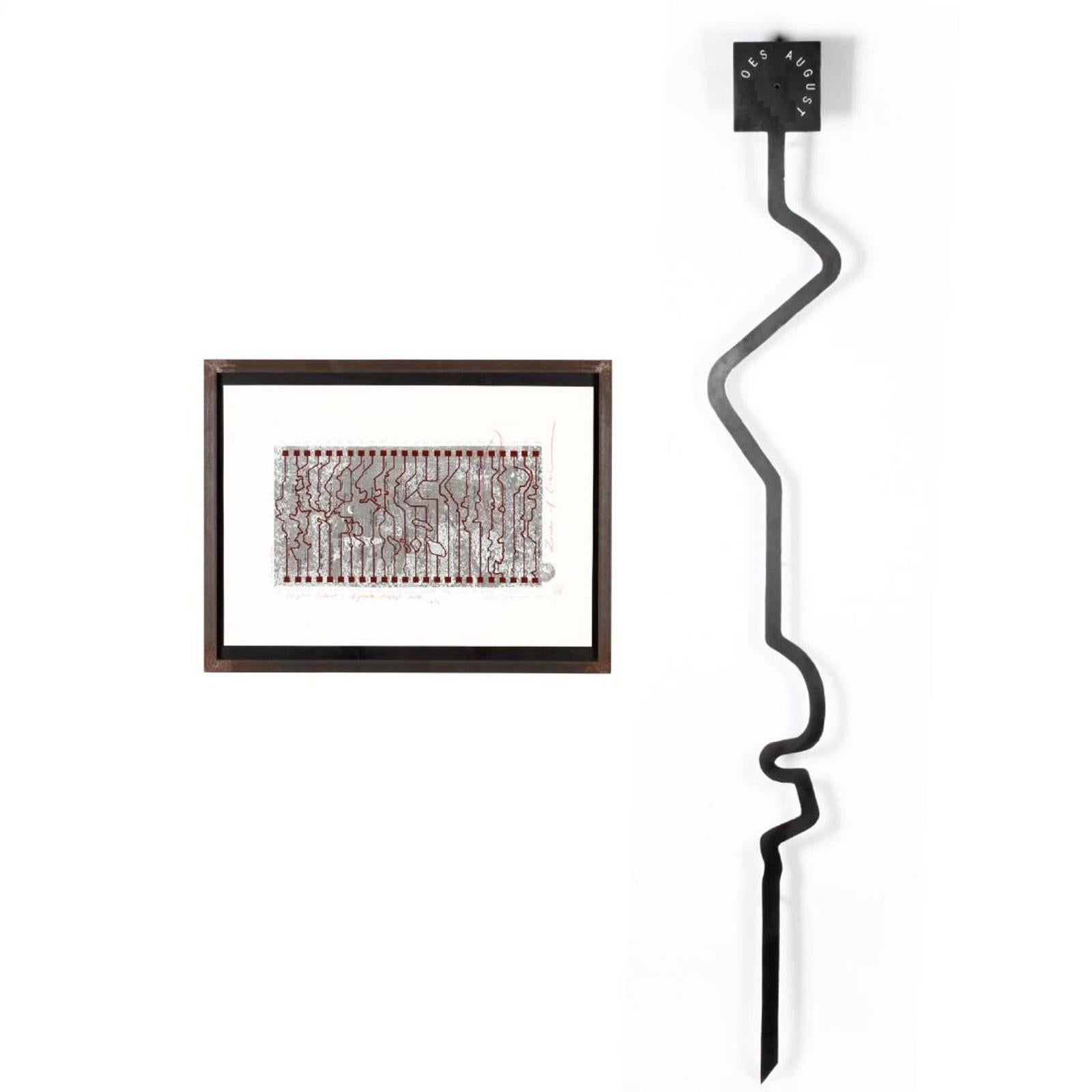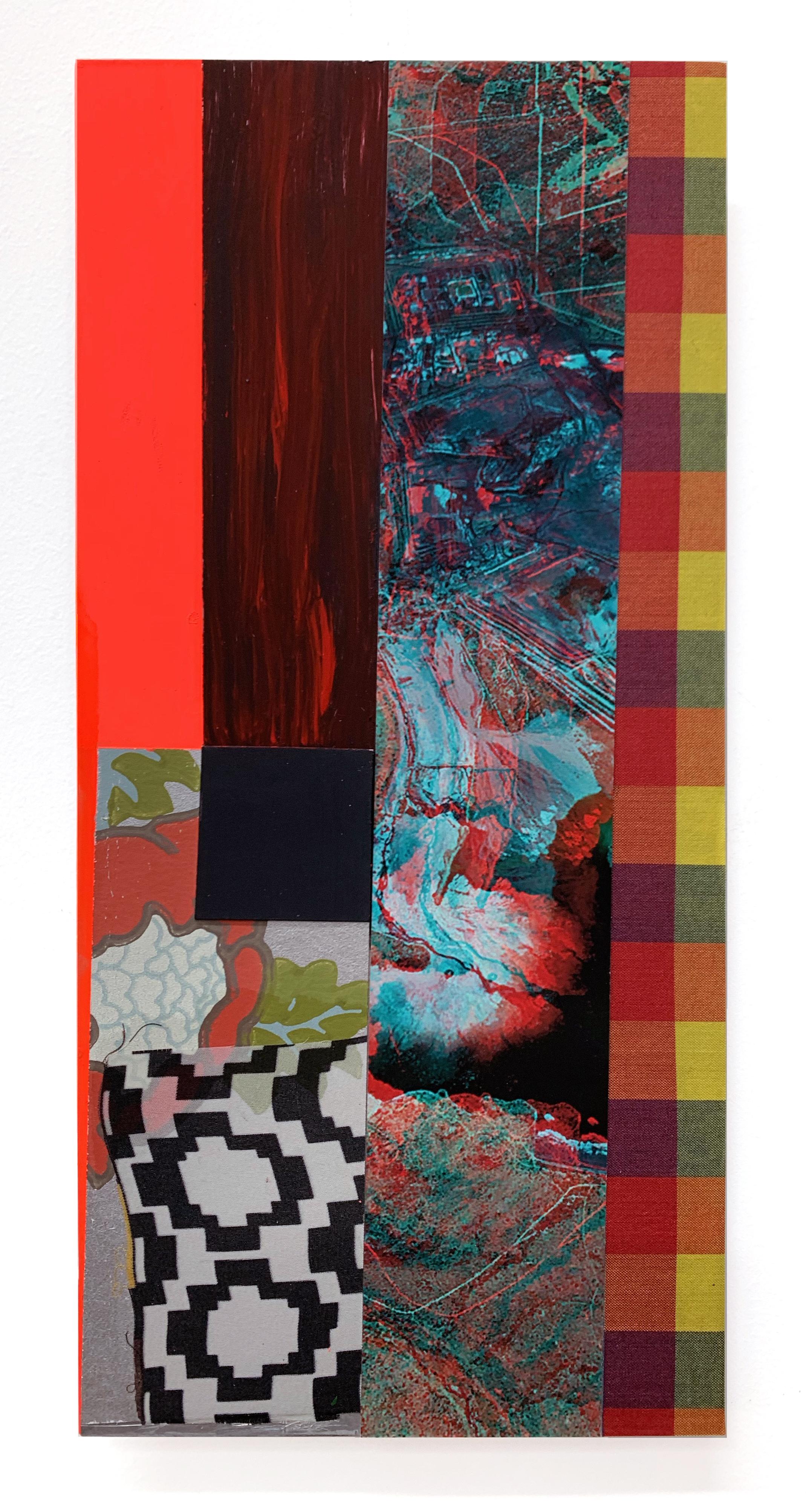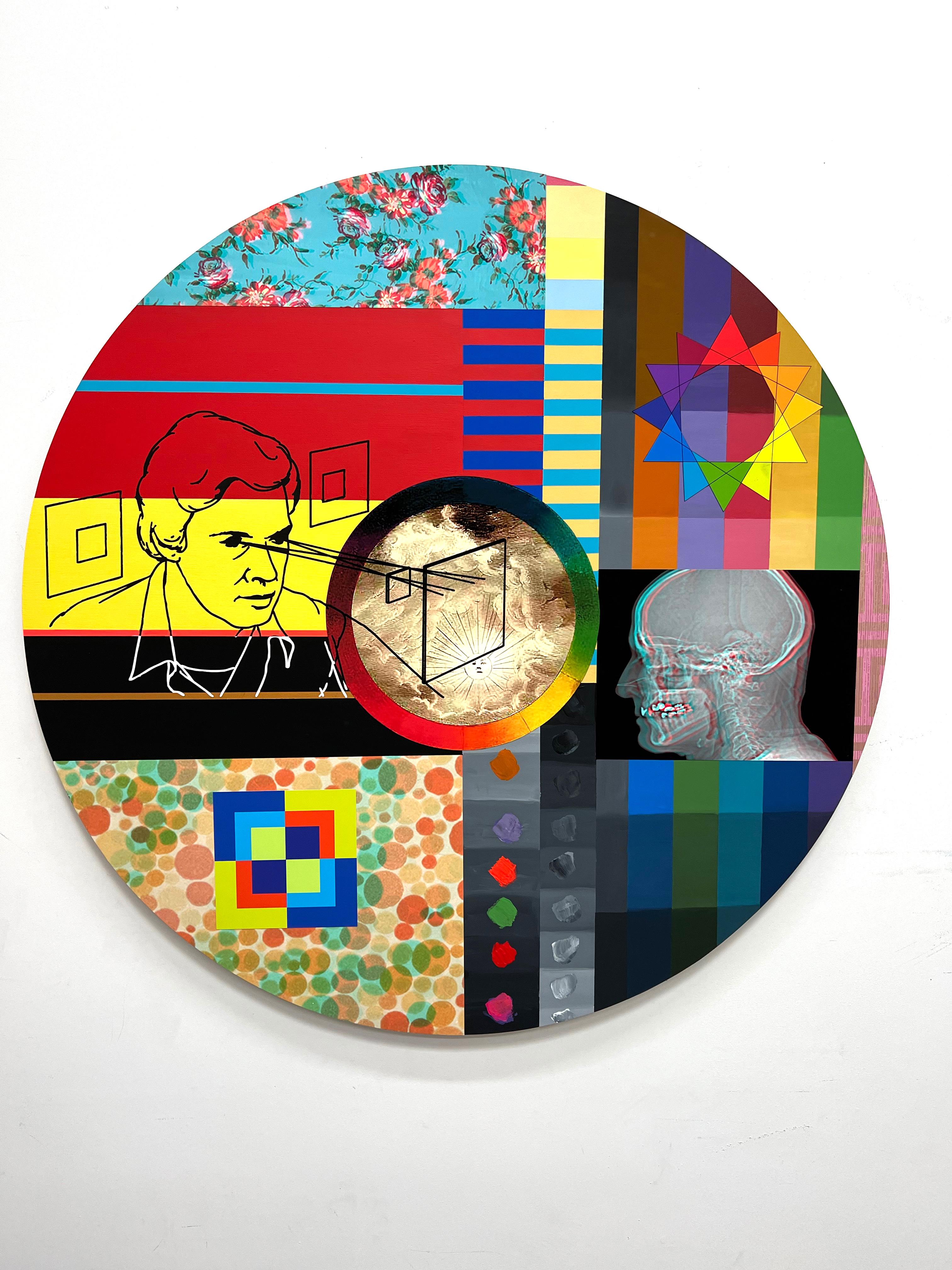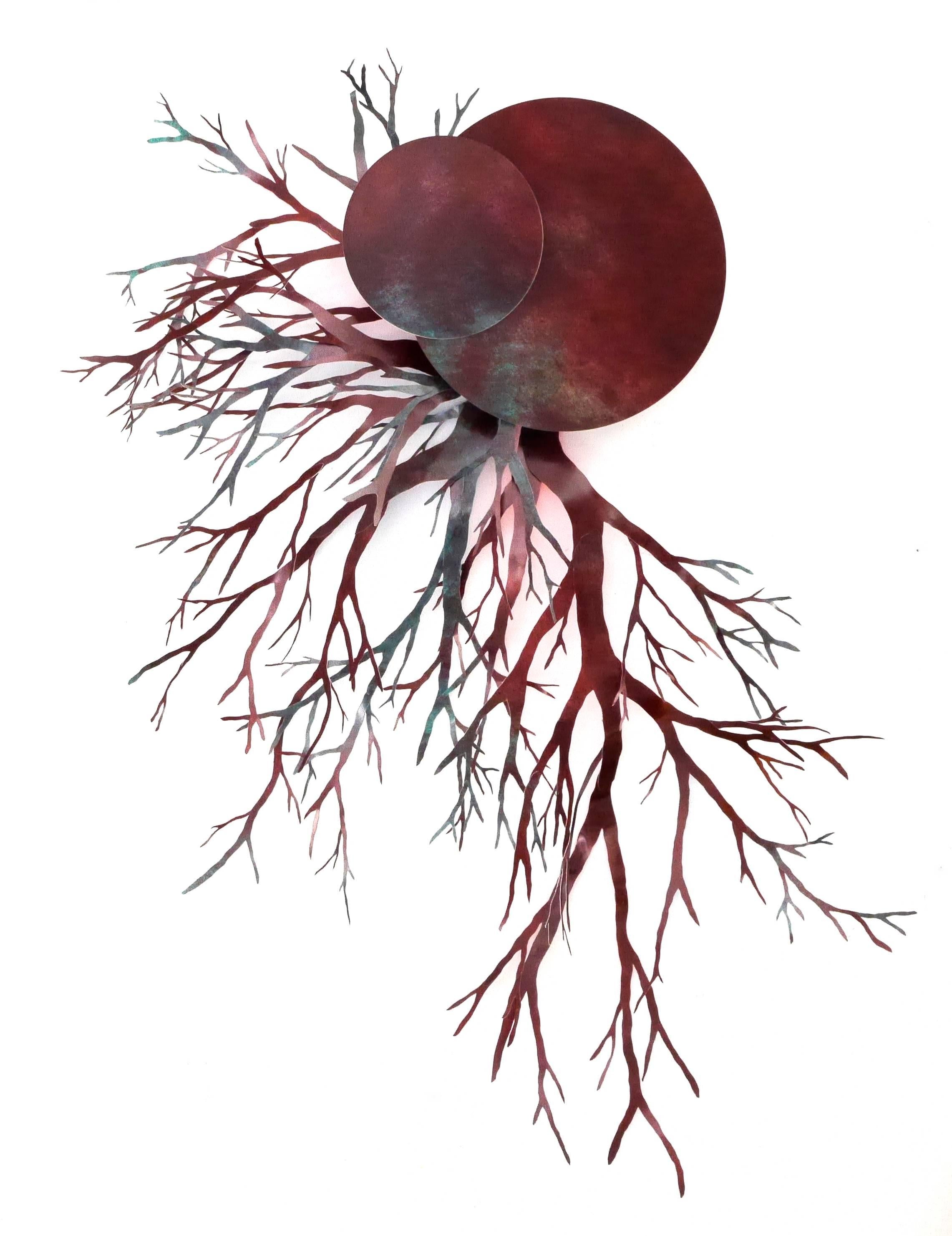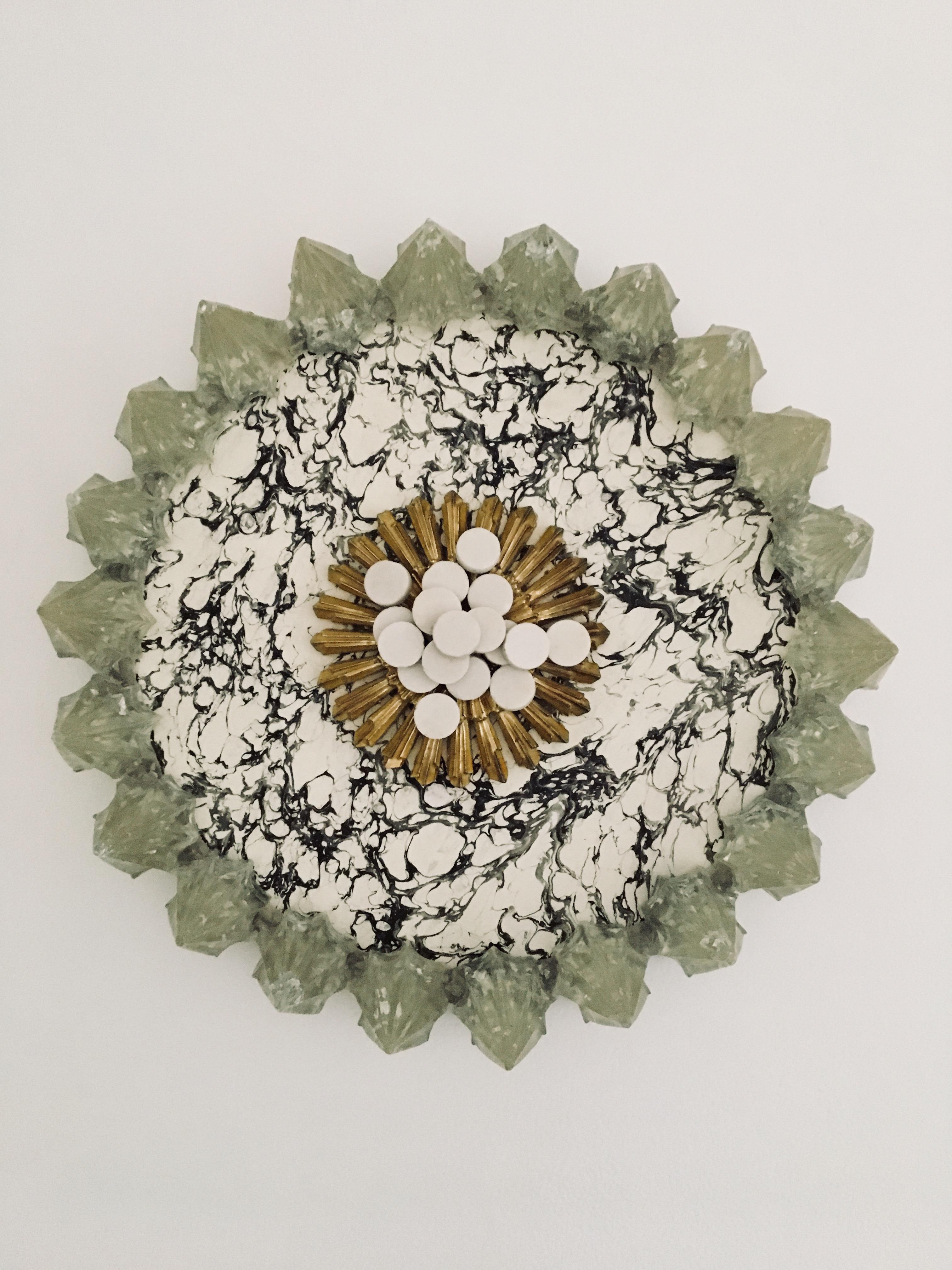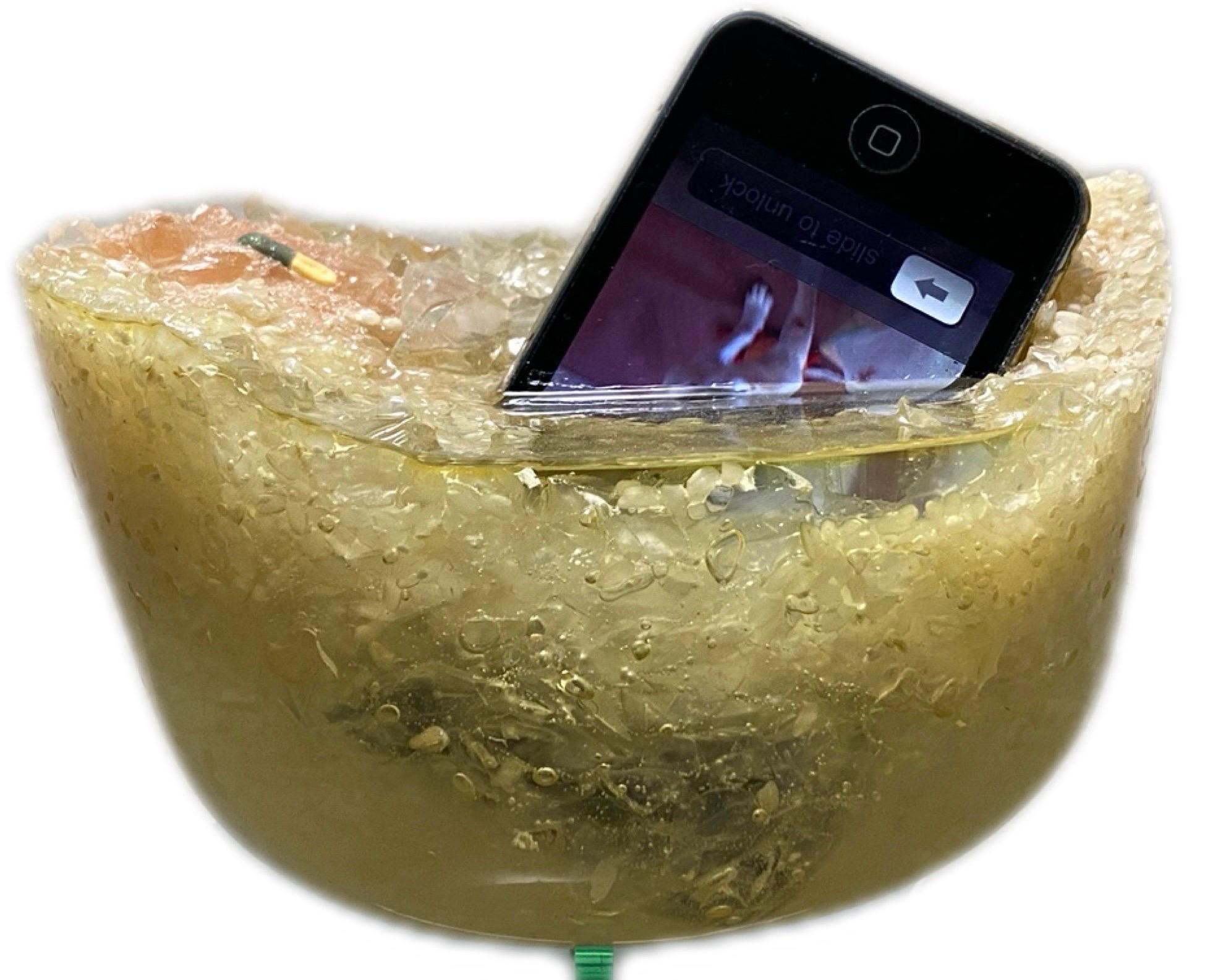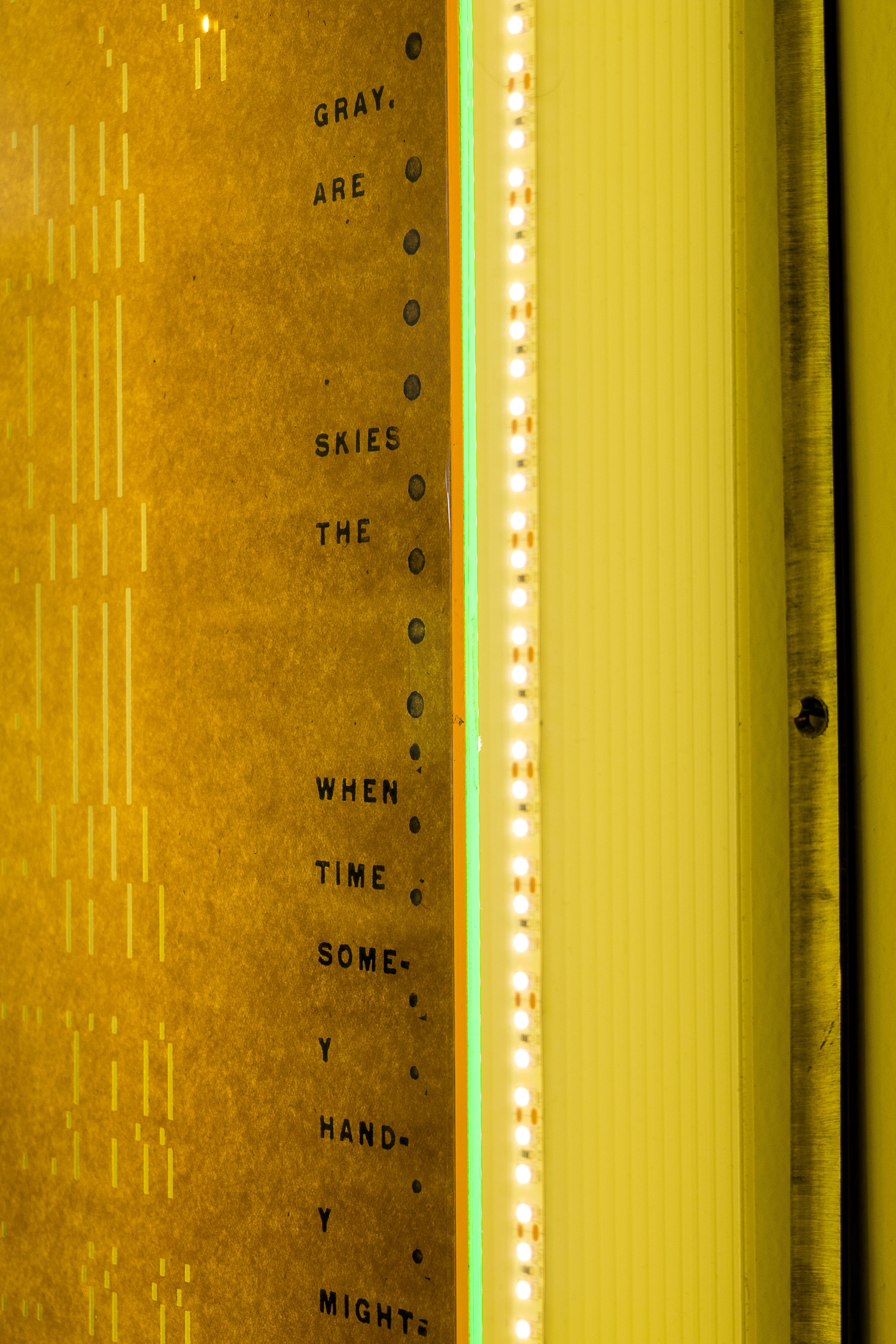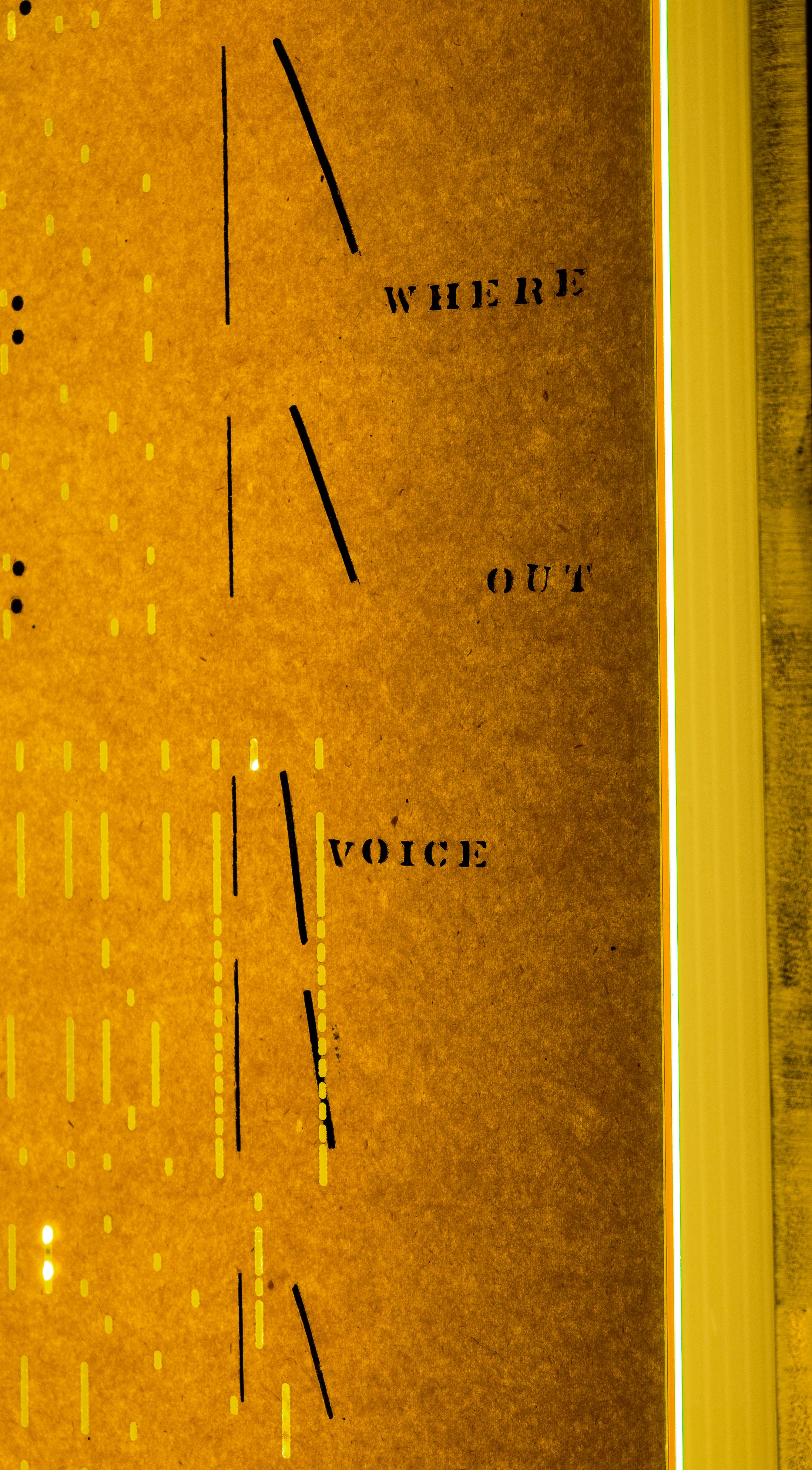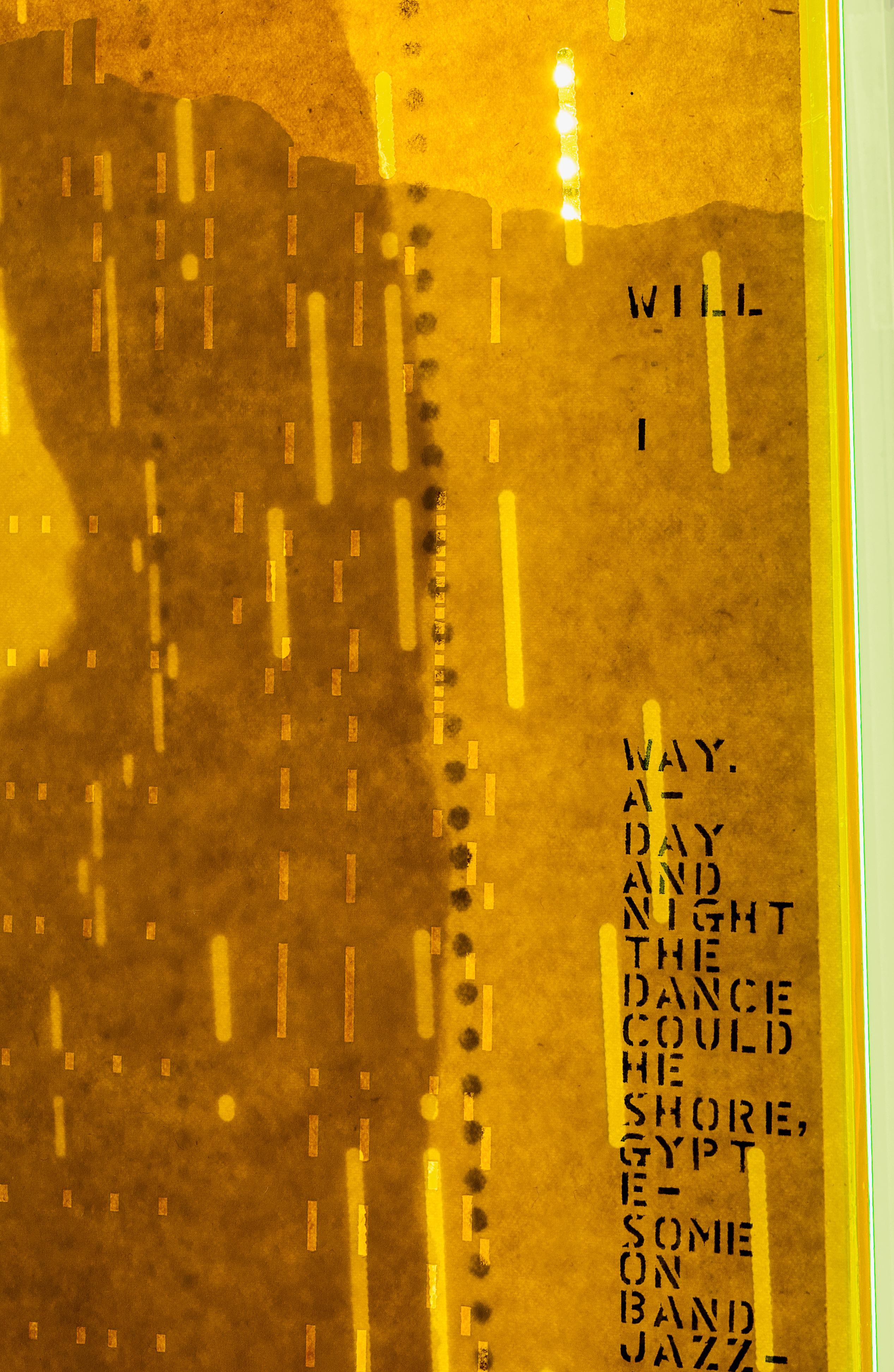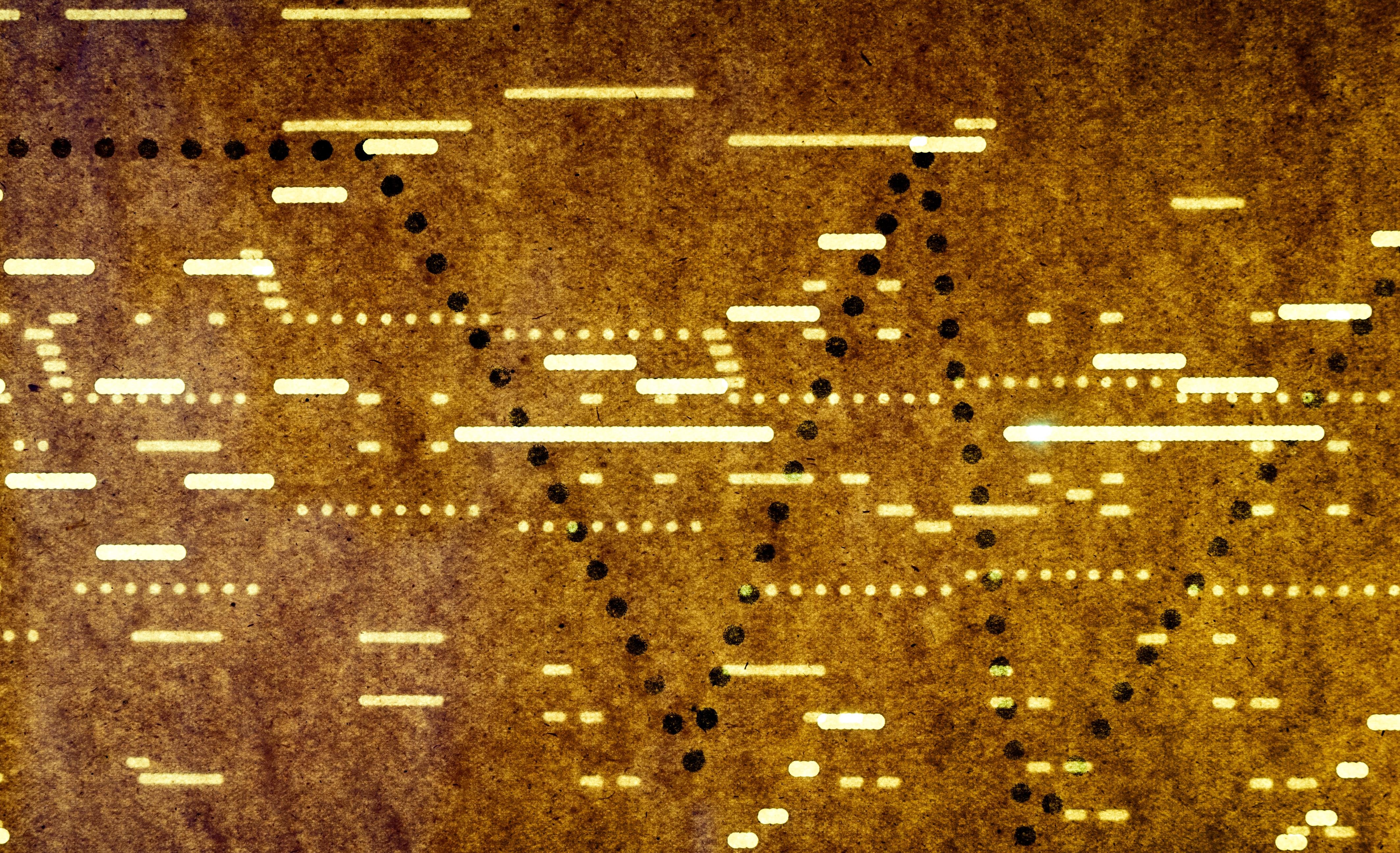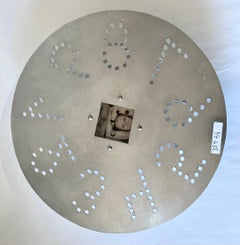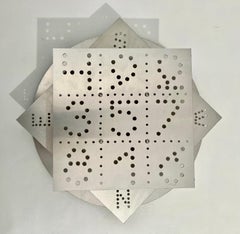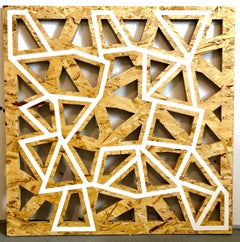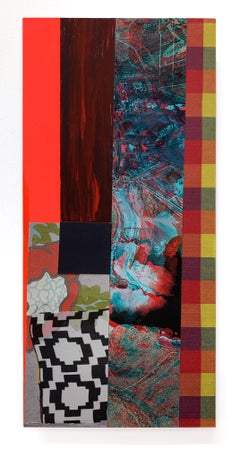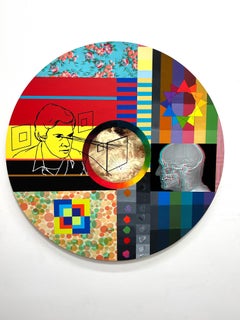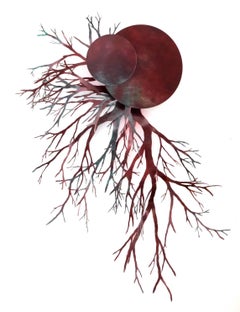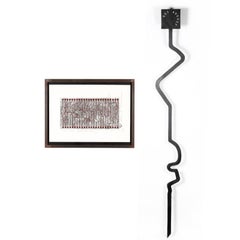
MIxed Media Conceptual Art Sculpture Drawing Human Rights Welded Iron
View Similar Items
Want more images or videos?
Request additional images or videos from the seller
1 of 9
Francoise ScheinMIxed Media Conceptual Art Sculpture Drawing Human Rights Welded Ironc.1990's
c.1990's
About the Item
- Creator:Francoise Schein (1953, Belgian)
- Creation Year:c.1990's
- Dimensions:Height: 94 in (238.76 cm)Width: 11 in (27.94 cm)
- Medium:
- Movement & Style:
- Period:
- Condition:minor wear, minor wear to sculpture, not sure what is intended letters are shaped on piece but not present.
- Gallery Location:Surfside, FL
- Reference Number:1stDibs: LU3823229603
About the Seller
4.9
Platinum Seller
Premium sellers with a 4.7+ rating and 24-hour response times
Established in 1995
1stDibs seller since 2014
1,753 sales on 1stDibs
Typical response time: 1 hour
Authenticity Guarantee
In the unlikely event there’s an issue with an item’s authenticity, contact us within 1 year for a full refund. DetailsMoney-Back Guarantee
If your item is not as described, is damaged in transit, or does not arrive, contact us within 7 days for a full refund. Details24-Hour Cancellation
You have a 24-hour grace period in which to reconsider your purchase, with no questions asked.Vetted Professional Sellers
Our world-class sellers must adhere to strict standards for service and quality, maintaining the integrity of our listings.Price-Match Guarantee
If you find that a seller listed the same item for a lower price elsewhere, we’ll match it.Trusted Global Delivery
Our best-in-class carrier network provides specialized shipping options worldwide, including custom delivery.More From This Seller
View AllMIxed Media Conceptual Art Sculpture Drawing Human Rights Welded Iron
By Francoise Schein
Located in Surfside, FL
This is a large sculpture and also includes an artist custom framed silkscreen with extensive handwork titled Line of Time, pencil signed and inscribed, presented in heavy metal and wooden frame (framed piece 24.5 x 30 in., sculpture piece is about 94 X 11 inches)
Francoise Schein is a visual artist, trained as an architect - urban planner; She also teaches art at the ESAM Higher School of Arts and Media in Caen in Normandy . She is the founder of the INSCRIRE Association.
In 2016, she was elected member of the Royal Academy of Sciences, Arts and Fine Arts of Belgium.
Group Exhibitions
Spain: 2016, The "5Contemporary" Paris gallery presented a group show at the Museum of Contemporary Art of Genalguacil, Spain. The show included important artists such as Françoise Schein, Mimouni and Pedro Castrortega.
Born in Brussels , Françoise Schein left Belgium after studying architecture at the higher institute of architecture of the French community - La Cambre where she wrote her thesis on fundamental rights, then studied urban design at the Columbia University in the City of New York . She lived 11 years in New York where she begins a work on cartography territories. Subway map Floating on NY Sidewalk is his first monumental urban sculpture located at 110 Greene Street in SoHo (1985). At that time her works are abstract landscapes of cities, made up of networks, lines, trajectories, territories, founding texts and stories. They are constructed of very diverse materials and light.
Returning back to Europe in 1989, she continues to work on what she calls her drawings-laboratories while beginning to integrate works in cities on civic themes, the main ones: at the Concorde metro station in Paris in 1991 and then in Brussels, Saint-Gilles , in 1992, these two projects took her to Lisbon in 1993 where she lived for five years and produced two monumental works (in azulejos) for the city of Lisbon at Parque metro station ( 1994) and another for the city of Stockholm at the Universitetet station (1998). She continues to travel to cities where she builds successively projects in Haifa , on the facade of the Beth Hagefen Jewish-Arab Cultural Center with Michel Butor (1994). Then she lives in Berlin where she builds the Westhafen station (2000) which takes her to Bremen to make her first human rights park, Rhododendronpark (2002). In 2005, she made the monumental Time Zone Clock in Coventry in 2005. Since 1999, she has also settled in Rio de Janeiro and initiated participatory artistic projects with the underprivileged population of the favelas . Since then, with the help of a locally trained team, many projects have been carried out, including one in Copacabana and more than 20 in different favelas (from 1999 to 2016). These works transformed the Rio workshop into sustainable development for the people who invested it. In Sao Paulo, since 2009, Françoise Schein has produced a monumental work with the participation of 1000 young people from the favela schools at Luz subway station.
Her work is monumental recalling the works of Christo, Maria Dompe, Christian Boltanski, Anish Kapoor, Ai Wei Wei...
Category
Late 20th Century Conceptual Abstract Sculptures
Materials
Iron
Russian Samizdat Art Conceptual Photo Sculpture Assemblage Gerlovin & Gerlovina
Located in Surfside, FL
Rimma Gerlovina and Valeriy Gerlovin
Clock, 1987-94
Aluminum sculpture, mixed media and c-print photograph construction, c-print, felt tip marker
13 h × 13 w × 4 d in (30 × 30 × 6 cm)
Rimma Gerlovina and Valeriy Gerlovin were founding members of the underground conceptual movement Samizdat in the Soviet Union, described in their book Russian Samizdat Art. Based on a play of paradoxes, their work is rich with philosophic and mythological implications, reflected in their writing as well. Their book Concepts was published in Russia in 2012. The work by Rimma Gerlovina and Valeriy Gerlovin is emphatically contemporary. The artist couple were part of the Moscow Conceptualists, their performance Costumes, from 1977, deepened their ongoing work with linguistic semiotic systems and their own bodies. Considering the context in which Gerlovina and Gerlovin made their work—that of political restrictions on public life, of unfreedom, and censorship—their collaborative togetherness must also be read as a space of possibility for political community and resistance. Rimma Gerlovina’s hair is featured prominently in the art of the Gerlovins as a constructing element of the body. Used for the linear drawings her braids transmit transpersonal waves reminiscent of an aura of live filaments. Long loose hairs function as threads of life; streaming in abundance, they allude to Aphrodisiac vitality and Samsonian strength. On the other hand, they are the haircloth worn during mourning and penitence. In New York they continued to make sculptural objects, and their photographic projects grew into an extended series called Photoglyphs. In their photographs, they use their own faces to explore the nature of thought and what lies beyond it. Since coming to the United States in 1980, they had many exhibitions in galleries and museums including the Art Institute of Chicago. The New Orleans Museum of Art launched a retrospective of their photography, which traveled to fifteen cities. Group exhibitions include the Venice Biennale, the Guggenheim Museum, New York, Smithsonian National Museum of American Art, Washington D.C., Bonn Kunsthalle, Germany, Tokyo Metropolitan Museum of Photography, State Tretyakov Gallery, Moscow, and others.
Samizdat or “self-published” began in the Soviet Union, and Samizdat art consists mainly of books and magazines published and distributed by the artists who made them. Samizdat art has sources in the innovative books and magazines turned out by the early 20th century Russian avant-garde—artists and writers like Olga Rozanova, Vladimir Mayakovsky, El Lissitzky, and Alexander Rodchenko.
Artists as varied as Alexander Archipenko, Leon Bakst, Marc Chagall, Naum Gabo, Alexandra Exter...
Category
1980s Conceptual Figurative Photography
Materials
Metal
Russian Samizdat Art Conceptual Compass Sculpture Assemblage Gerlovin, Gerlovina
Located in Surfside, FL
Rimma Gerlovina and Valeriy Gerlovin
Compass, 1988
Aluminum sculpture, mixed media and c-print photograph construction, c-print, felt tip marker
12.5 h × 12.5w × 4 d in (30 × 30 × 6 cm)
Rimma Gerlovina and Valeriy Gerlovin were founding members of the underground conceptual movement Samizdat in the Soviet Union, described in their book Russian Samizdat Art. Based on a play of paradoxes, their work is rich with philosophic and mythological implications, reflected in their writing as well. Their book Concepts was published in Russia in 2012. The work by Rimma Gerlovina and Valeriy Gerlovin is emphatically contemporary. The artist couple were part of the Moscow Conceptualists, their performance Costumes, from 1977, deepened their ongoing work with linguistic semiotic systems and their own bodies. Considering the context in which Gerlovina and Gerlovin made their work—that of political restrictions on public life, of unfreedom, and censorship—their collaborative togetherness must also be read as a space of possibility for political community and resistance. Rimma Gerlovina’s hair is featured prominently in the art of the Gerlovins as a constructing element of the body. Used for the linear drawings her braids transmit transpersonal waves reminiscent of an aura of live filaments. Long loose hairs function as threads of life; streaming in abundance, they allude to Aphrodisiac vitality and Samsonian strength. On the other hand, they are the haircloth worn during mourning and penitence. In New York they continued to make sculptural objects, and their photographic projects grew into an extended series called Photoglyphs. In their photographs, they use their own faces to explore the nature of thought and what lies beyond it. Since coming to the United States in 1980, they had many exhibitions in galleries and museums including the Art Institute of Chicago. The New Orleans Museum of Art launched a retrospective of their photography, which traveled to fifteen cities. Group exhibitions include the Venice Biennale, the Guggenheim Museum, New York, Smithsonian National Museum of American Art, Washington D.C., Bonn Kunsthalle, Germany, Tokyo Metropolitan Museum of Photography, State Tretyakov Gallery, Moscow, and others.
Samizdat or “self-published” began in the Soviet Union, and Samizdat art consists mainly of books and magazines published and distributed by the artists who made them. Samizdat art has sources in the innovative books and magazines turned out by the early 20th century Russian avant-garde—artists and writers like Olga Rozanova, Vladimir Mayakovsky, El Lissitzky, and Alexander Rodchenko.
Artists as varied as Alexander Archipenko, Leon Bakst, Marc Chagall, Naum Gabo, Alexandra Exter...
Category
1980s Conceptual Figurative Photography
Materials
Metal
Alkyd Enamel Oil Painting Half A Thought Cut Panel Wall Hanging Modern Sculpture
By Peter Wegner
Located in Surfside, FL
Oil-based alkyd enamel on plywood panel with cuts. this is a cut plywood wall relief sculpture with paint on it. This has an architectural quality to it.
Peter Wegner (born 1963) i...
Category
21st Century and Contemporary Conceptual Abstract Paintings
Materials
Enamel
Lady, Marble and Fabric Conceptual Abstract Sculpture Maria Dompe
By Maria Dompe
Located in Surfside, FL
MARIA DOMPE, (Italian, b. 1958), Lady Sculpture, marble and fabric, 1995, height: 14 in.
One of a pair, (Lady and Gentleman) being sold separately.
Maria Dompe was born in Fermo on ...
Category
Late 20th Century Conceptual Abstract Sculptures
Materials
Marble
Gentleman, Marble and Travertine Conceptual Sculpture
By Maria Dompe
Located in Surfside, FL
MARIA DOMPE, (Italian, b. 1958), Gentleman Sculpture, marble and travertine, 1995, height: 20 in.
One of a pair, (Gentleman and Lady) being sold separately.
Maria Dompe was born in ...
Category
Late 20th Century Conceptual Abstract Sculptures
Materials
Travertine, Marble
You May Also Like
Limpopo, 2021
By Michael Davis
Located in Palm Desert, CA
Style: Contemporary, Modern, Conceptual
Small study for the series “Rare Earth"
Category
21st Century and Contemporary Conceptual Abstract Sculptures
Materials
Metal
$960 Sale Price
20% Off
Color Theory 2022 Contemporary collage
By Michael Davis
Located in Palm Desert, CA
Style: Contemporary, Modern, Conceptual
The artwork is an assembly of art fundamental theories in juxtaposition with patterns, shapes and archival digital prints illustrating phenome...
Category
21st Century and Contemporary Conceptual Mixed Media
Materials
Fabric, Plywood, Paint, Paper, Digital
$6,000 Sale Price
20% Off
Jo Yarrington, Ghost Girls, 2018, Organic Material, Photographic Film, Plastic
By Jo Yarrington
Located in Darien, CT
Radioluminescence is the phenomenon by which light is produced in a material by bombardment with ionizing radiation and can be used as a low-level light source for night illumination of instruments or signage or other applications where light must be produced for long periods without external energy sources. Radioluminescent paint used to be used for clock hands and instrument dials...
Category
2010s Conceptual Abstract Sculptures
Materials
Pins, Organic Material, Plastic, Photographic Film, Acrylic Polymer, Fou...
Mixed Media Planet with Roots: 'Fons et origo #3' (Source & Origin)
By Angelica Bergamini
Located in New York, NY
Fons et origo, which in Latin means Source and Origin, includes 8 wall-sculptures. These circular shapes sprout long roots in delicate hand-cut formations. Some of the roots have tin...
Category
2010s Conceptual Abstract Sculptures
Materials
Metal, Wire
Resin Abstract Circle Sculpture: 'Circle'
By Kelly Bugden + Van Wifvat
Located in New York, NY
The artistic collaboration of Kelly Bugden + Van Wifvat has produced a thought-provoking body of sculptures, paintings, and constructions. Nature, childhood memories, and everyday archetypes take shape in unexpected combinations of materials. The works emerged as the tactile and visual senses channeled the ritualistic power and materiality of selected artifacts.
The resulting objects exist in a space between what they were originally and what they could become. A wheel, for example, is distorted as if seen through a prism. Their collaboration grew out of years of shaping materials into one-of-a-kind objects. Intuitively, the process of creating with their hands took an inward turn. Prism is a travelogue through memories and dreams, yielding abstract forms that capture moments of transformation.
Van Wifvat grew up with eight siblings and studied sculpture and environmental design in Minneapolis at MCAD. In 1979, he opened a storefront art gallery to promote the work of local artists. The space featured printed materials—art books, periodicals, fanzines, and postcard’s. Wifvat moved to New York in 1983 to study at the Fashion Institute of Technology and Parsons. In 1987, he co-founded Van Gregory & Norton design studio, specializing in convex mirrors and curtain hardware...
Category
2010s Conceptual Abstract Sculptures
Materials
Ceramic, Resin, Wood, Glaze, Handmade Paper
Banquet IV-Time Capsule-ipod2008-Resin Casting-UK Awarded Conceptual Artist
Located in London, GB
The sculpture, Banquet IV - Time Capsule Project , is one of the pivotal pieces showcased in the 2016 London exhibition titled “ White" , a casting project by Shizico Yi, who is making her family and personal belongings into time capsule in transparency Epoxy.
This ipod (2008) casted in rice, glass and Epoxy was her last ipod before iphone was invented; the ipod is still operable ( see pictures) even after pouring into the resin in 2016. As long the battery kept charged from time to time, you still can touch the screen and see images on the touch screen.
( ipod charger and the display stand are included)
**Guarantee End to end tracking Delivery Worldwide with lowest shipping £22 flat-rate from the UK)
Free Shipping in the UK.
The Time Capsule sculpture...
Category
2010s Conceptual Abstract Sculptures
Materials
Metal, Wire
